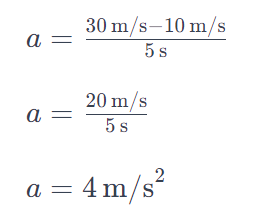Net Acceleration Calculator
Introduction
Calculating net acceleration can be crucial in various physics and engineering scenarios. Whether you’re analyzing the motion of objects or designing machinery, understanding net acceleration is fundamental. In this article, we’ll provide a comprehensive guide on how to use a simple calculator to determine net acceleration.
How to Use
To use the net acceleration calculator, simply input the initial velocity v0, final velocity v, and time t into the respective fields. Then, click the “Calculate” button to obtain the net acceleration a.
Formula
The formula to calculate net acceleration (a) is given by:

Where:
- v = Final velocity
- v0 = Initial velocity
- t = Time
Example Solve
Let’s consider an example where v0=10m/s, v=30m/s, and t=5s.
Using the formula:

FAQs
Q: What is net acceleration?
A: Net acceleration is the overall acceleration of an object, taking into account changes in velocity over time.
Q: How is net acceleration different from acceleration?
A: Acceleration typically refers to the rate of change of velocity of an object in a particular direction, while net acceleration considers the overall change in velocity regardless of direction.
Q: Can net acceleration be negative?
A: Yes, net acceleration can be negative if the final velocity is less than the initial velocity, indicating a decrease in speed.
Conclusion
Understanding net acceleration is essential in various scientific and engineering applications. With the provided calculator and formula, you can efficiently determine net acceleration for different scenarios, aiding in the analysis and design processes.